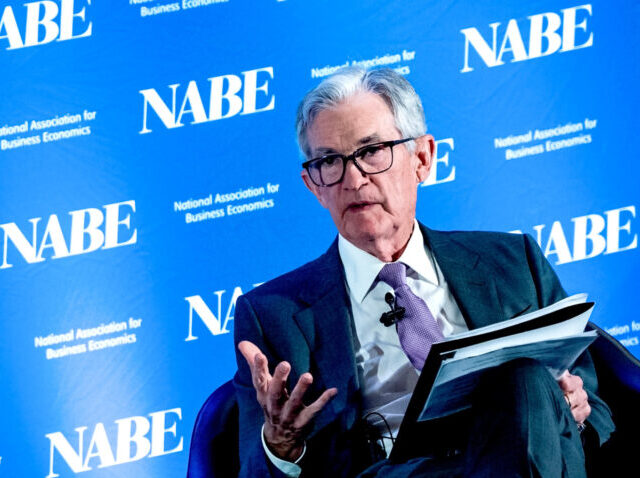Federal Reserve Chair Jerome Powell reaffirmed on Monday that he views the U.S. economy as fundamentally strong, even as the central bank made a surprising move to cut interest rates earlier this month.
Speaking at the annual meeting of the National Association for Business Economics in Nashville, Powell sought to explain the Fed’s decision to lower rates while expressing confidence in the economy’s resilience.
“We have made a good deal of progress toward our goal of reducing inflation without a painful rise in unemployment,” Powell said, signaling that the Fed remains committed to what economists often call a “soft landing” for the economy.
The rate cut, a half-point reduction that brought the Fed’s policy rate to a range of 4.75 to 5 percent, was unexpected given the Fed’s repeated assertions of economic strength. Powell portrayed the move as a calculated effort to maintain momentum in the labor market while continuing to bring inflation down toward the central bank’s target of 2 percent.
Still, the decision has raised questions about the Fed’s strategy, particularly as Powell himself acknowledged the underlying robustness of the economy. The divergence between the Fed’s rhetoric of strength and its actions of easing monetary policy has left some market participants and analysts wondering whether the central bank is responding to concerns not yet fully visible in the data.
While Powell sidestepped specific questions about whether future rate cuts would be 25 or 50 basis points, he emphasized that decisions would be made “meeting by meeting,” allowing the Fed flexibility to react to changing economic conditions. The central bank is aiming to bring rates down to a “neutral” level—estimated around 3 percent—where monetary policy neither stimulates nor restricts growth.
At present, the Fed views its policy rate as still somewhat restrictive, dampening economic demand. Yet some economists point to the resilience of financial markets—marked by five straight months of gains in the S&P 500 and Dow Jones Industrial Average—as evidence that the economy may not be as vulnerable as the Fed suggests.
In the coming weeks, markets will be focused on upcoming jobs reports, which Powell indicated would play a crucial role in shaping the Fed’s next moves. Stronger-than-expected job growth could lead to a smaller 25-basis-point rate cut, while weaker labor data might push the Fed to take more aggressive action, with another 50-basis-point reduction.
The balancing act the Fed faces—cutting rates while signaling confidence in economic growth—reflects the challenge of managing an economy that has thus far defied expectations. Powell’s optimism on Monday, juxtaposed with the Fed’s latest moves, leaves open the question of whether the central bank is anticipating a slowdown that has yet to materialize

COMMENTS
Please let us know if you're having issues with commenting.